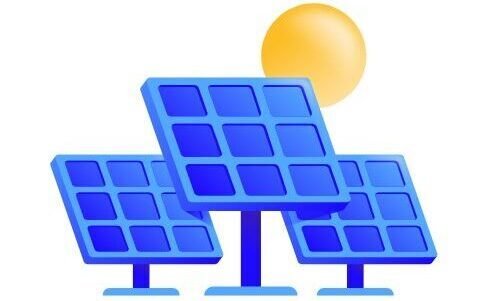Solar energy is increasingly popular in Pakistan as a solution to the country’s energy crisis and high electricity costs. As of 2024, the prices of solar panels in Pakistan vary depending on several factors, including the type, brand, wattage, and quality of the panels. This guide provides an in-depth look at the current market trends and prices for solar panels in Pakistan.
Types of Solar Panels
There are three main types of solar panels available in Pakistan:
- Monocrystalline Solar Panels: Known for their high efficiency (20-22%) and good performance in low-light conditions, these panels are made from a single silicon crystal. They are generally priced between Rs. 55 to Rs. 63 per watt. Popular brands include Jinko, Longi, and Canadian Solar.
- Polycrystalline Solar Panels: These are less efficient (16-18%) compared to monocrystalline panels but are cheaper. They are made from multiple silicon crystals and typically cost between Rs. 50 to Rs. 58 per watt. Brands such as Canadian Solar and JA Solar are common in this category.
- Thin-Film Solar Panels: With efficiencies ranging from 10-15%, these panels are lighter and more flexible, making them suitable for specific installations. They are priced between Rs. 45 to Rs. 52 per watt, with brands like Hanergy and First Solar leading the market.

Prices by Brand and Wattage
The price of solar panels can also vary significantly by brand and wattage:
- Jinko Solar: Known for high efficiency, a 550W monocrystalline panel costs around Rs. 25,000 to Rs. 28,000【9†source】【10†source】.
- Canadian Solar: A 575W Topcon panel is priced at Rs. 41 per watt, totaling around Rs. 23,575【8†source】【9†source】.
- JA Solar: Their 580W bifacial panels are available at Rs. 43 per watt, equating to about Rs. 24,940【9†source】.
Price Variations Across Cities
Prices for solar panels can vary by region due to factors such as local market conditions and logistical costs. Here are the average price ranges per watt for major cities in Pakistan:
- Islamabad: Rs. 39 to Rs. 45
- Lahore: Rs. 43 to Rs. 46
- Karachi: Rs. 41 to Rs. 48【9†source】.
Additional Costs
Investing in solar panels also involves several additional costs:
- Solar Inverters: Essential for converting DC to AC, inverters can range from Rs. 10,000 to Rs. 1,500,000 depending on their capacity【7†source】.
- Solar Batteries: Used for storing excess energy, prices range from Rs. 10,000 for lead-acid batteries to Rs. 50,000 for lithium-ion batteries【7†source】.
- Mounting Structures: These secure the panels and cost between Rs. 5,000 to Rs. 20,000【7†source】.
Factors Influencing Prices
Several factors influence the cost of solar panels:
- Quality and Brand: Premium brands like Tesla and LG cost more due to advanced technology and proven performance.
- Wattage and Efficiency: Higher wattage and more efficient panels are generally more expensive.
- Government Policies: Incentives and subsidies can reduce the initial investment【8†source】【9†source】.
Benefits of Solar Panels
Investing in solar panels offers numerous advantages:
- Cost Savings: Significant reduction in electricity bills.
- Environmental Impact: Contribution to reducing carbon footprint.
- Energy Independence: Reliable power supply, especially in areas with frequent outages.
- Long Lifespan: Modern panels last 25-30 years with proper maintenance【9†source】.
Conclusion
The solar panel market in Pakistan is diverse, with options to fit various budgets and energy needs. While initial costs can vary, the long-term savings and environmental benefits make solar energy a worthwhile investment. Potential buyers should consider their specific requirements, the quality of the panels, and the reputation of the brands before making a purchase.
Green Tractor Scheme 2024: Transforming Agriculture in Pakistan
Introduction
Agriculture is the backbone of Pakistan’s economy, employing nearly half of the labor force and contributing significantly to the country’s GDP. However, the sector faces numerous challenges, including outdated farming techniques, high input costs, and low productivity. To address these issues, the Government of Pakistan has launched the Green Tractor Scheme 2024, a transformative initiative aimed at modernizing agriculture and improving the livelihoods of farmers across the country.
Objectives of the Green Tractor Scheme
The primary goal of the Green Tractor Scheme 2024 is to enhance agricultural productivity and sustainability. Key objectives include:
- Modernizing Farming Techniques: By providing farmers with access to modern, efficient tractors and agricultural machinery, the scheme aims to replace traditional farming methods with more advanced and productive practices.
- Reducing Input Costs: Subsidized tractors will help reduce the financial burden on farmers, enabling them to invest in other essential inputs such as seeds, fertilizers, and pesticides.
- Increasing Crop Yields: With better machinery, farmers can cultivate larger areas more efficiently, leading to higher crop yields and improved food security.
- Promoting Sustainable Agriculture: The scheme encourages the adoption of environmentally friendly farming practices, contributing to the sustainable development of the agriculture sector.

Key Features of the Scheme
The Green Tractor Scheme 2024 offers several key features designed to benefit farmers and boost the agriculture sector:
- Subsidized Tractors: Eligible farmers can purchase tractors at significantly reduced prices, thanks to government subsidies. This makes it more affordable for small and medium-sized farmers to acquire modern machinery.
- Easy Financing Options: The scheme provides attractive financing options through partner banks, allowing farmers to pay for their tractors in installments over an extended period.
- Training and Support: To ensure the effective use of new machinery, the scheme includes training programs and technical support for farmers. This helps them maximize the benefits of their new equipment.
- Inclusive Approach: The scheme targets small and marginal farmers, including women and youth, to ensure that the benefits of modern agriculture reach the most vulnerable and underserved segments of the farming community.
- Collaborations with Private Sector: The government collaborates with tractor manufacturers and other private sector entities to ensure the availability of high-quality machinery and after-sales services.
Implementation and Impact
The Green Tractor Scheme 2024 is being implemented in phases across different regions of Pakistan. The government has allocated substantial funds for the scheme, ensuring its widespread reach and impact. The scheme’s implementation involves close coordination with provincial agriculture departments, ensuring that local needs and conditions are taken into account.
The anticipated impact of the Green Tractor Scheme 2024 is significant. By modernizing farming practices and increasing productivity, the scheme is expected to:
- Boost Agricultural Output: Higher crop yields will contribute to overall economic growth and food security.
- Improve Farmer Incomes: Reduced input costs and increased productivity will lead to higher incomes for farmers, improving their standard of living.
- Enhance Rural Development: The scheme will create job opportunities in rural areas, supporting overall rural development.
- Promote Sustainable Practices: By encouraging the use of environmentally friendly machinery and techniques, the scheme will help protect natural resources and promote sustainable agriculture.
Conclusion
The Green Tractor Scheme 2024 represents a bold and visionary step towards transforming Pakistan’s agriculture sector. By providing farmers with access to modern machinery, financial support, and training, the scheme aims to enhance productivity, reduce costs, and promote sustainable farming practices. As the scheme unfolds, it holds the promise of significantly improving the livelihoods of farmers and contributing to the overall development and prosperity of Pakistan.
Laptop Scheme 2024: Bridging the Digital Divide
Introduction
In an era where digital literacy is paramount, access to technology is crucial for educational and professional success. Recognizing this need, the government has launched the Laptop Scheme 2024, aiming to provide students and young professionals with the tools necessary to thrive in the modern digital world. This initiative is a significant step towards bridging the digital divide, ensuring that all segments of society have the opportunity to participate in the digital economy.
Objectives of the Scheme
The primary objective of the Laptop Scheme 2024 is to enhance digital literacy and facilitate access to online resources for students across the country. By providing laptops to deserving students, the scheme aims to:
- Promote Educational Equity: Ensure that students from underprivileged backgrounds have the same access to educational resources as their more affluent peers.
- Enhance Learning Outcomes: Improve students’ academic performance by providing them with the tools to access online educational materials, research, and virtual classrooms.
- Foster Digital Skills: Equip students with the necessary digital skills required in today’s job market, thereby increasing their employability.
- Encourage Innovation and Creativity: Enable students to explore new ideas and innovate using digital tools and technologies.

Eligibility Criteria
To ensure that the laptops reach the most deserving candidates, the scheme has set forth specific eligibility criteria:
- Academic Performance: Students must have a minimum academic performance threshold, ensuring that the recipients are dedicated and motivated individuals.
- Financial Need: Priority is given to students from low-income families, ensuring that financial constraints do not hinder their educational progress.
- Level of Study: The scheme targets students enrolled in higher education institutions, including universities and technical colleges, across various disciplines.
Distribution Process
The distribution of laptops is carried out in a transparent and efficient manner. The process involves several key steps:
- Application Submission: Eligible students are required to submit their applications online through a dedicated portal. The application process is designed to be user-friendly, ensuring that all eligible candidates can easily apply.
- Verification and Selection: Applications are reviewed and verified by a committee to ensure that all eligibility criteria are met. This includes cross-checking academic records and financial status.
- Distribution Events: Laptops are distributed to selected students during special events held at various educational institutions. These events often include training sessions on how to use the laptops effectively for academic purposes.
Impact and Benefits
The Laptop Scheme 2024 is expected to have a profound impact on the educational landscape. Some of the anticipated benefits include:
- Increased Access to Education: Students will have greater access to online courses, educational resources, and e-books, enhancing their learning experience.
- Improved Academic Performance: With the ability to research and complete assignments more efficiently, students are likely to see an improvement in their grades and overall academic performance.
- Enhanced Employability: By developing essential digital skills, students will be better prepared for the workforce, making them more competitive in the job market.
- Reduced Digital Divide: The scheme aims to level the playing field, ensuring that students from all backgrounds have equal opportunities to succeed in the digital age.
Conclusion
The Laptop Scheme 2024 is a visionary initiative that addresses a critical need in the education sector. By providing students with the necessary digital tools, the scheme not only enhances educational outcomes but also fosters a culture of innovation and inclusivity. As the program continues to evolve, it holds the promise of transforming the educational landscape, paving the way for a more equitable and digitally literate society
Solar Panels for Home: A Comprehensive Guide
Introduction to Solar Panels
Solar panels have emerged as a popular and sustainable energy solution for homes around the globe. Harnessing the power of the sun, these panels convert sunlight into electricity, offering an eco-friendly alternative to traditional energy sources. With the increasing awareness of environmental conservation and the rising cost of conventional energy, more homeowners are considering solar panels as a viable option.
How Solar Panels Work
Solar panels are composed of photovoltaic (PV) cells, which are made from semiconductor materials like silicon. When sunlight hits these cells, it excites electrons, creating an electric current. This process, known as the photovoltaic effect, is what generates electricity. The electricity produced is direct current (DC), which is then converted into alternating current (AC) by an inverter, making it usable for household appliances and lighting.
Types of Solar Panels
There are three main types of solar panels commonly used in residential settings:
- Monocrystalline Solar Panels: Made from a single continuous crystal structure, these panels are known for their high efficiency and longevity. They are typically more expensive but offer better performance in low-light conditions.
- Polycrystalline Solar Panels: These are made from multiple silicon crystals melted together. They are less efficient than monocrystalline panels but are more affordable and have a simpler manufacturing process.
- Thin-Film Solar Panels: Made by depositing one or more layers of photovoltaic material on a substrate, these panels are flexible and lightweight. They are less efficient than crystalline panels but can be used in a variety of applications where traditional panels might not be suitable.

Benefits of Installing Solar Panels at Home
- Cost Savings: One of the primary benefits of solar panels is the potential for significant cost savings on electricity bills. By generating your own electricity, you can reduce your dependence on the grid and, in some cases, even eliminate your electricity bills entirely.
- Environmental Impact: Solar energy is a clean and renewable source of power. By using solar panels, you reduce your carbon footprint and contribute to the fight against climate change. Unlike fossil fuels, solar energy does not produce harmful emissions or pollutants.
- Energy Independence: With solar panels, you become less reliant on external energy providers. This can be particularly beneficial in areas with unreliable power grids or frequent outages. Having a solar system can ensure a more consistent and reliable power supply for your home.
- Increase in Property Value: Homes equipped with solar panels often see an increase in property value. Many buyers are willing to pay a premium for homes with pre-installed solar systems due to the long-term energy savings and environmental benefits.
Considerations Before Installing Solar Panels
- Initial Investment: While solar panels can lead to long-term savings, the initial installation cost can be significant. It’s essential to consider the upfront investment and weigh it against the potential savings over time.
- Roof Condition and Space: The condition and orientation of your roof play a crucial role in the efficiency of your solar panels. A south-facing roof with minimal shading is ideal. Additionally, your roof must be in good condition and have enough space to accommodate the number of panels needed for your energy consumption.
- Local Regulations and Incentives: Before installing solar panels, research local regulations, building codes, and available incentives. Many governments offer tax credits, rebates, or other incentives to encourage the adoption of solar energy. These can significantly reduce the overall cost of installation.
Conclusion
Solar panels are an excellent investment for homeowners looking to reduce their energy costs, lower their environmental impact, and gain energy independence. By understanding the types of solar panels, the benefits they offer, and the considerations before installation, you can make an informed decision about whether solar energy is right for your home. As technology advances and prices continue to fall, solar panels are becoming an increasingly attractive option for households worldwide.
